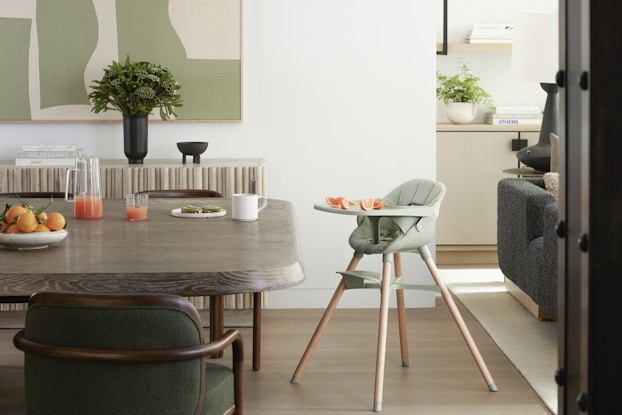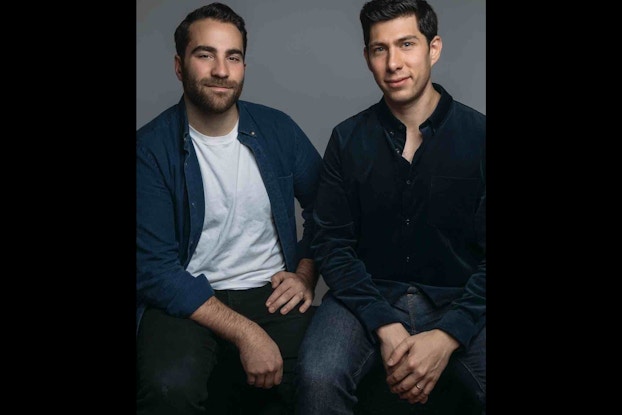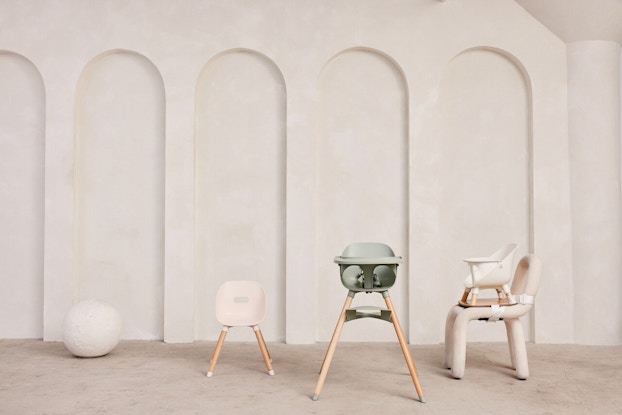
Why it matters:
- In 2024, the North American baby furniture market generated $14.86 billion in sales, fueled partly by consumer demand for premium furniture, according to a Market.US report.
- Along with higher birth rates in North America, the boom in premium baby furniture reflects sales of higher-end goods marked by heightened attention to safety, design, quality, tech innovation, and sustainability.
- Leaning into these trends, design-driven, premium baby furniture startup Lalo, as of March 2025, saw unit sales grow by 73% over the prior six months.
Michael
Wieder and Greg Davidson weren’t fathers when they decided to
launch their premium baby furniture brand, Lalo.
Parenthood would come later but the friends—who met at job platform
WayUp
where Davidson was Head of Sales and Wieder was Head of Brand
Partnerships—knew a good idea when they saw one.
All
around them, friends were having babies, and the gravity of that
inflection point in an adult’s life was all too apparent. Wieder
and Davidson realized that first-time parents navigate uncharted
waters. “This isn’t like shopping for pots and pans for wedding
registries where most of us have a baseline understanding of what’s
good and what we need,” Davidson pointed out.
Finding a differentiator: Premium baby furniture for millennial parents
Wieder and Davidson noticed the baby goods category was heavily splintered, with each company specializing only in one product, such as strollers or high chairs. These companies were selling that one item repeatedly, in a one-and-done business model. Noticing a sizable lost opportunity for retaining customers, the friends wondered: What if we could birth an entire family of products which customers could buy into for years?

The
other pain point: The bright primary colors for baby goods clashed
with millennial design tastes. “It was all green plastic and
cartoonish pandas,” Davidson remembered. “Just because you’re a
parent doesn’t mean you have to sacrifice your sense of self.”
Indeed,
Neil Saunders, Managing Director and Retail Analyst at GlobalData Retail,
points out: “When it comes to buying baby goods, millennial parents
are very trend-driven and like to have modern products.”
Modern
and sleek was exactly the aesthetic Wieder and Davidson had in mind.
In conducting early design research, they evaluated established
design giants in the adult world for inspiration. “Our mood boards
for bathtubs for example weren’t really looking at infant bathtubs
but a freestanding Kohler
tub. We wanted to see how you could bring a thing like that to life
for a child but from a fresh, innovative perspective,” Davidson
said.
It
wasn’t Lalo’s design alone that appealed to millennial
sensibilities. Keeping in mind that six in 10 Gen Z consumers (59%)
and millennials (60%) are willing to pay more
for sustainable products and services, the retailer has made
reusability the cornerstone of its sustainability strategy. Many Lalo
products can morph from one product to another. A three-in-one
highchair for example, converts to a play chair or booster.
Growing
pains: making inroads in a hard-to-crack market with (not-so-obvious)
influencers
When
Lalo was almost ready for game time in 2019, Davidson and Wieder
realized why legacy brands were such heavyweights in the kid
category. (Brands such as Graco
and Storkcraft,
for, example, are legacy market-share leading players in the U.S.
baby furniture sector, according to Market.US.)
New parents wading into unfamiliar territory based on word-of-mouth,
including from previous generations, counted for a lot. How then
could an upstart make its way in?
“The
biggest nut we had to crack was to create this validation and trust,
and the best way for us [was to] be very prescriptive about guerrilla
marketing strategies where influencers did the drumbeat for us,”
said Davidson.
That guerrilla strategy focused on influencers. These were not overt Mommy or Daddy influencers but more subtle ones like cooking influencers who were also parents and who could have Lalo as part of the background furniture. It made such an impression in videos that commenters would ask about the highchair in the corner, Davidson said. Influencers were not paid but did receive products. Even then, Lalo’s outreach was strategic by connecting with people first to understand them better and then shipping products before bringing up partnerships. Influencers who Lalo has worked with recently include @gigigumrika and @yummytoddlerfood.
You have to come to the table with a fresh perspective, one that shows you understand the business, customer, and category so that you'll stand out and prove that you belong there.Davidson, Co-founder and CEO of Lalo, on the company's approach to Target
Persistence
has been key to overcoming funding challenges. Getting investors to
bite early on was difficult, but over time, as more products were
added to the Lalo universe, investors opened their wallets. “It was
about following up in a non-annoying way and showing [them our]
progress,” Davidson said. The
strategy paid off: Lalo has secured $15.7 million in funding over the
last six years and recently closed an undisclosed investment round
with Comcast’s
Forecast Labs
in 2024.
[Read
more: 3 Startups Reveal Their Roadmap for Developing and Launching a Successful Sustainable Product]
With
their products made in China, Lalo has been keeping an eye on the
tariff situation. While there has been some talk of baby products
being exempt, the company is unsure how tariffs will impact their
business.
Banking on customer service: early fans earn perks from other brands and in-person events
Understanding
that influencer marketing is for naught if customer retention is
poor, Lalo has been very intentional about customer satisfaction.
Early faithfuls have received special perks. Lalo discovered its
customers’ love of dogs through social media; as a result, one dog
lover received accessories from dog
lifestyle brand Wild One,
while another was gifted a trial subscription to The Farmer’s Dog.
In-person
events that bring families together are also popular. Lalo-palooza
is an outdoor, family-friendly music series started a few years ago
in Brooklyn and has since expanded to Miami. The events feature live
music performances from local artists, interactive activities like
dancing and arts and crafts, and giveaways. “It’s been a great
way for the Lalo fam to come together and create meaningful
experiences through in-person connections, which ultimately generates
more brand awareness outside of our product portfolio,” Davidson
said.
[Read more: Inside How 3 Scaling Startups Cracked Walmart, Target, and Ulta]

Betting
on premium, trend-forward fare lands
Target deal
In
2024, North America led the share of the worldwide baby furniture
market, generating $14.86 billion
in sales
driven by demand for premium baby furniture. The market was fueled by
high birth rates and consumer demand for premium goods that reflect
heightened attention to safety, design, quality, tech innovation, and
sustainability, according to the Market.US report.
That
demand has been driving Lalo’s momentum. Looking to carry more
premium goods, Target reached out to Lalo, which debuted at the
cheap-chic discounter in January. The retailer has been keen on
expanding its offerings in the baby category and added 2,000 new
items this spring.
“One-fourth
of our guests are shopping for baby, and we’re curating our
assortment to give them just what they need,” said Amanda Nusz,
Target’s Senior Vice President for Merchandise, in a press release.
She cited Lalo among its lineup of new trend-forward fare in modern
décor and colors that aims to lure today’s parents.
In
January 2025, Lalo lowered its prices—a 13% to 42% reduction on 90%
of their SKUs. While the price reduction was unrelated to the Target
deal, it dovetails with the retailer’s “affordable, on-trend”
brand equity.
Lalo
has about eight feet of dedicated space across 45 SKUs in about 235
of the retailer’s stores. The tight store count aligns with the
markets where Target believed the products would be most successful.
The retailer currently stocks the Lalo highchair, booster seat, and
three-in-one bathtub, in addition to other SKUs from the brand.
“You have to come to the table with a fresh perspective, one that shows you understand the business, customer, and category so that you'll stand out and prove that you belong there,” Davidson said about Lalo’s approach to Target. “Having that mindset will help open doors and also build lasting relationships.” That same mindset has helped the brand reap rich dividends: Lalo has seen unit sales grow by 73% over the six-month period that ended in March 2025.
CO— aims to bring you inspiration from leading respected experts. However, before making any business decision, you should consult a professional who can advise you based on your individual situation.
CO—is committed to helping you start, run and grow your small business. Learn more about the benefits of small business membership in the U.S. Chamber of Commerce, here.

Interested in a small business membership?
Find out how the U.S. Chamber of Commerce can help your company grow and thrive in today's rapidly-evolving business environment. Connect with our team to learn how a small business membership can benefit your bottom line and help you achieve your goals.







